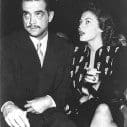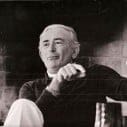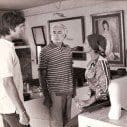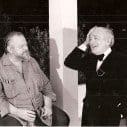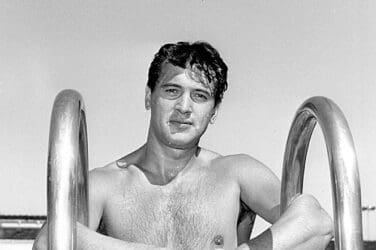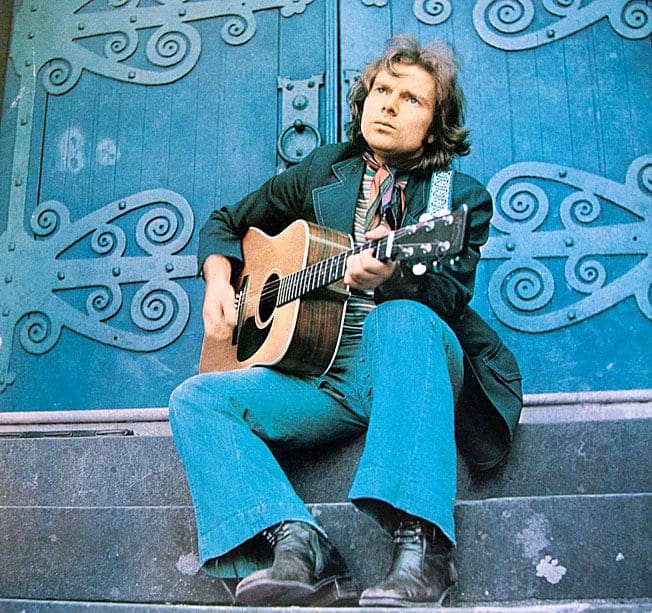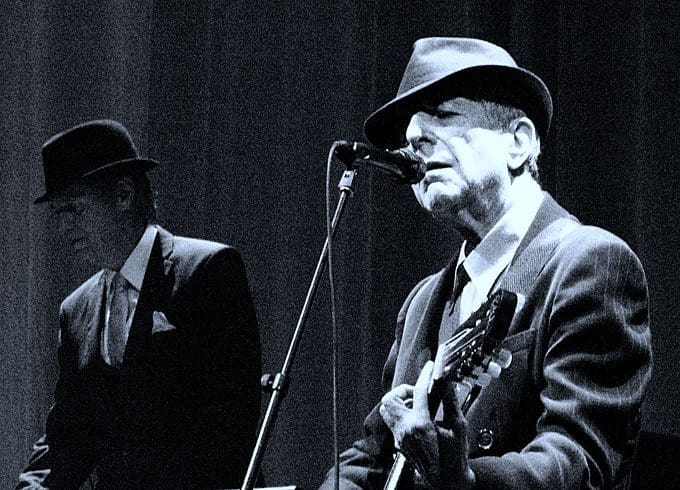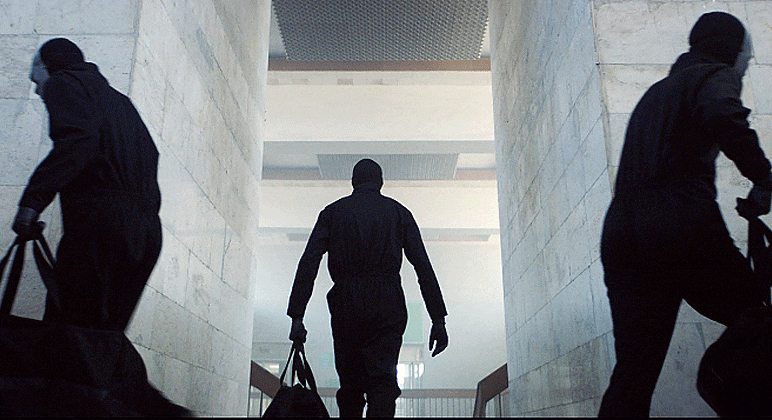I am not an expert.
I say that with all due consideration to you, the reader, who may well have found this page expecting expertise, thinned and straightened into horizontal lines, ready for you to take up your collective noses like Victorian snuff. We live in the era of the expert.
The twenty four hour news media, to borrow an increasingly dreary phrase, screams for, day in day out, and thusly teems with, expertise, battalions of experts eager to validate any newspaper, any news network, any website with their considered meanderings into the anointed topics of the day.
Every statement needs validation. Every argument needs both sides. Two statements of fact. But with more and more statements being made, through countless platforms, mouthpieces and mediums, the clamour for authentication is prompting the bar for expertise to be lowered further and further.
Expertise is overrated. An expert can’t be trusted. Overarching statements and both subjects of Orson Welles’s recently re-released late-period film F is for Fake. The film focuses on two notorious swindlers: Elmyr de Hory and Clifford Irving, one notorious recluse: Howard Hughes and a whole host of dubious experts.
“In the late 1960s Elmyr de Hory was the world’s most talented and most successful art forger ever,” says Mark Forgy, a writer from Minneapolis and one time assistant to Elmyr. Forgy is, you could say, one of the leading Elmyr experts still living, the holder of the deceased painter’s personal papers, he acted as de Hory’s confidant and bodyguard. When the painter committed suicide in 1976, with the law closing in, it was Forgy who found Elmyr dying from an overdose of sleeping pills.
Forgy certainly boasts all the trappings of the expert, he’s written a book (The Forger’s Apprentice – A True Story) that’s one peg up in the expertise stakes. The book has been turned into a play (directed by Sara Pillatzki-Warzeha, co written and co-produced by Mark Forgy and Kevin Bowen, first performed at the Minnesota Fringe in August 2013). Mark Forgy is even available for lectures. In fact at this juncture you might think it best for me to hand over to Mark Forgy to complete this brief lecture on Elmyr de Hory and the falling stock of expertise in our century, but, to paraphrase Orson Welles: “This isn’t that kind of article.”
Mark Forgy is not the only expert on the life and times of Elmyr de Hory, and he certainly isn’t the most famous, and fame counts for a lot these days. Clifford Irving (whose name you might have heard most often mentioned in regards to Howard Hughes – more on him later) was the first to publish a book on the great Elmyr after spending some time together with him on the island of Ibiza, where Elmyr planned to settle after spending years running from city to city avoiding the police. The book was Fake! and it told the story of how some of Elmyr’s fake Picassos, Modiglianis, Reichenbachs and Renoirs made their way, un-rumbled, into the most prestigious art collections in the world, where some of them may remain to this very day.
But Irving, the writer and momentary expert on Elmyr, had his sights set on becoming the authoritative source on a man even more fleeting and mysterious than the Hungarian born painter.
Howard Hughes was the great mystery man of his age, the Saran wrapped enigma, the man who engineered the uplifting brassiere and the grounded Spruce Goose, made movies and wooed Katharine Hepburn, before disappearing, to some top floor penthouse suite in Las Vegas where he kept bottles of his own urine, padded about with Kleenex boxes on his feet and saw no one. So the stories go. So the experts tell us. Sequestered in the Desert Inn, surrounded by a ‘band of mystery Mormons’, bemoaning that dago bastard Frank Sinatra who had stolen his girl, the world waited for the Hughes comeback, after all, nobody turns their back on celebrity, not in America, everybody comes back to the lights, eventually.
Cliff Irving erroneously believed Hughes had gone for good and should he, Irving, produce a book, an autobiography, a fake autobiography featuring fraudulent contributions from Hughes himself, then the missing billionaire would surely not stir from his rooftop hideout disturbing the desert sands covering his lair, in order to refute Irving’s fantasy. He’d been gone for fifteen years by then, could be dead for all Irving knew, or at the very least the Kleenex stories could be true and the old man would be too crackers to notice.
Hughes was a man desperate for his story to be told, said Irving, they had met in various locations around the world for interviews, including incredulously, on top of a Mexican pyramid, like a scene from a fake de Chirico painting. And why not a Mexican pyramid? Hughes was gaga, so the more outrageous the better. After all if there is one thing people hate more than anything it’s an unfinished story, think Kennedy in Dallas, Princess Grace in the hills above Monaco and Diana in the Alma Tunnel. An unfinished story leaves a void ready to be filled with bunk, scurrilous sculch, which people believe, if it gives meaning to a meaningless end, or in this case, something even more ethereal and infuriating (for the gossip hound) than death, an unexplained disappearance.
The world bought it. Time Magazine bought it to the tune of $250,000 for serial rights to the manuscript while Dell Publishing Company offered a further $400,000 for the paperback rights. But before money exchanged hands, Irving’s big book of lies had to pass muster with the experts. Hughes’s signature on the documents agreeing to the publication of the book had to be authenticated. The best handwriting experts in the whole-wide-world were summoned and pored over the documents like pigs over a trough of satsumas. They huffed and puffed and wiped their sweaty brows and concluded, after much study, that yes, this was the signature of the real Howard Hughes and with the approbation of the sainted experts given, Irving had his scoop, the scoop, bar the (phoney) Hitler diaries, of the century.
Hughes should never have had to stir from his stupor to dismiss the story, there should have been countless experts on hand to do that for him, people in possession of the plain facts. And yet that is exactly was he was forced to do, not physically though, instead his disembodied voice appeared over a phone line to a room full of invited journalists.
“I don’t remember any script as wild or as stretching of the imagination as this yarn has turned out to be,” said the supposed voice of Hughes. “I don’t know Irving. I never saw him. I never even heard of him until a matter of days ago when this thing first came to my attention.”
Despite the fact that it was known that Howard Hughes had used voice doubles in the past, the journalists, who were all supporters of Hughes, concluded that the voice did indeed belong to the dyspeptic billionaire, just as the handwriting experts had identified the hand of a Hughes in Irving’s phoney web.
When the flush of a newborn sun fell first on Eden’s green and gold,
Our father Adam sat under the Tree and scratched with a stick in the mold;
And the first rude sketch that the world had seen was joy to his mighty heart,
Till the Devil whispered behind the leaves: “It’s pretty, but is it Art?”
When Adam scratched Eve’s name onto the Eden tree, its my guess he didn’t initial it, but for as long as that tree stood, way back in the BC’s I bet there was some knowing character on hand to point out the landmark, and I’m sure that when that etching was weathered off the bark, or the tree was felled, that someone was quick enough to whittle a replacement, so as not to loose the tourist trade.
“It’s pretty, but is it art” wrote Ruddy Kipling, a verse quoted by Welles in F for Fake. You could say that Elmyr’s fakes are pretty, but certainly not art, because of their carbon copy nature. But then again, can’t deception be artful? Irving’s bogus autobiography was certainly artful in its circumvention of the truth. Expertise is easy to fake if you are able to say something well enough.
Speak delicate untruths in an authoritative voice and you will most likely be believed in the heat of the moment. Anything jump out at you when you read earlier: “Fake! told the story of how some of Elmyr’s fake Picassos, Modiglianis, Reichenbachs and Renoirs made their way, undiscovered, into some of the most prestigious art collections in the world.”? Reichenbach? An artist who ranks with the greats? No such person. Francois Reichenbach, the producer of F for Fake, the more likely candidate here. But did you briefly believe in this new artistic master as you skimmed these paragraphs? Were you willing to give me the benefit of the doubt, just for a moment?
Perhaps the more pertinent question, in an age where news and celebrity have become intertwined is should we be more realistic about the outlets we turn to for truth? Anyone who looks towards a blog say, or a tabloid newspaper, the Daily Mail, for example, for hard, provable fact and then screams bloody murder when they are left disappointed is misguided. It is blatantly obvious that the purpose of the Mail, in its current form, is not to inform, but to entertain, in the same way as a Beano comic will.
A character assassination here, a sexing up of the facts there, from the ‘fascist den’ at the Daily Mail to the supposed ‘nest of Marxists’ that comprises the BBC, these aren’t sins against the public, but are the well-meaning acts of a new and fine breed of storytellers, currently residing in the one time impenetrable fortresses of truth and justice that once made up the media in the UK and the US. Ranks of Clifford Irvings, willing to put fiction before the truth for the sake of entertainment, backed by cherry picked experts frothing at the mouth to contribute. And what of it? Why not enjoy the hapless flinging of cream pies that constitutes our national discourse. Just don’t start believing everything you hear, the recorded voice of Howard Hughes appearing out of the ether won’t always be there to dismiss the inexactitudes of the experts. Today, that job is up to us.
And with that the writer drops his authoritative voice, takes off his mask and returns to civilian life.
words Robert Leeming


